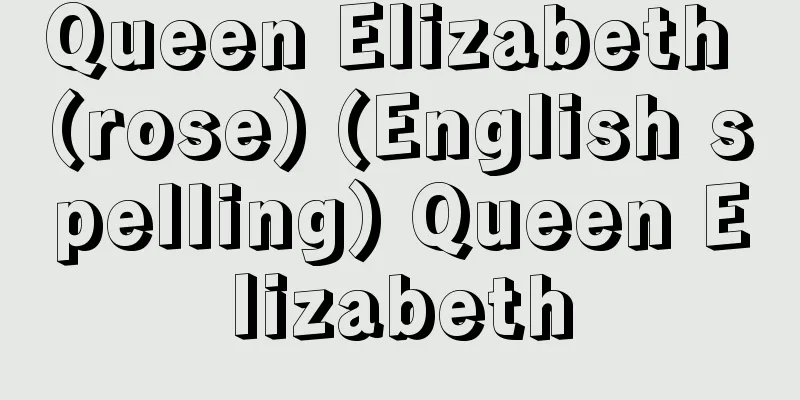Rigoletto - Rigoletto (English spelling)

|
A three-act opera by Italian composer Verdi. It premiered in Venice in 1851. It is a tragedy based on karma, with a libretto by Francesco Maria Piave (1810-1876) based on the play Les reins amusements by French writer Hugo. It is one of Verdi's masterpieces, and has had a great influence on later generations for the strong connection between the characterization of the characters and the melodic ingenuity, as well as the high dramatic effect of the music. Rigoletto, a clown serving the Duke of Mantua, seduces his womanizer master and helps him find women, but when Count Monterone, whose daughter has been toyed with by the Duke, curses him, saying that he will come to understand his father's anger, Rigoletto becomes anxious about his daughter Gilda. Gilda falls in love with the Duke of Mantua, who approaches her disguised as a student, and is eventually taken to the Duke's mansion. In a fit of rage, Rigoletto hires the hitman Spafstile to assassinate the Duke, but when Gilda finds out, she is killed in place of her beloved Duke, and Rigoletto is overcome with grief as the curtain closes. There are many arias sung individually, and some of the most famous are "Is it this or that?" and "What is the name of my beloved?" in Act 1, "Demon, demon?" in Act 2, and "Woman's song" in Act 3. The Japanese premiere was in 1919 (Taisho 8), when excerpts were performed by Hara Nobuko (1893-1979), Shimizu Kintaro (1889-1932), and others. [Yukio Miyake] "A. Champay and D. Holland, eds. Masterpiece Opera Books 10: Rigoletto (1988, Ongaku No Tomosha)" [References] |Source: Shogakukan Encyclopedia Nipponica About Encyclopedia Nipponica Information | Legend |
|
イタリアの作曲家ベルディの三幕からなるオペラ。1851年ベネチア初演。フランスの作家ユゴーの戯曲『王は楽しむ』に取材したピアーベFrancesco Maria Piave(1810―1876)の台本による因果応報を主題とした悲劇で、ベルディの代表作の一つであるとともに、人物の性格描写と旋律的創意との強固な結び付き、また音楽のもつ劇的効果の高さにおいて、後世に多大な影響を及ぼした。領主マントバ公爵に仕える道化リゴレットは、漁色家の主人を唆して女あさりを手伝うが、公爵に娘をもてあそばれたモンテローネ伯爵に、おまえにも父親の怒りがわかるときがくるだろうと呪(のろ)いをかけられ、愛娘ジルダの身を案じて不安に駆られる。そのジルダは、学生に化けて言い寄ってきたマントバ公爵を愛するようになり、やがて公爵邸に連れ去られる。憤怒(ふんぬ)に燃えたリゴレットは殺し屋スパフスチレに公爵の暗殺を依頼するが、それを知ったジルダは愛する公爵の身代りとなって殺され、リゴレットが悲嘆に暮れるうちに幕となる。単独で歌われるアリアも多く、第一幕の「あれか、これか」「慕わしい人の名は」、第二幕の「悪魔め、鬼め」、第三幕の「女心の歌」などはとくに名高い。日本初演は1919年(大正8)原信子(のぶこ)(1893―1979)、清水金太郎(1889―1932)らによる抄演。 [三宅幸夫] 『A・チャンパイ、D・ホラント編『名作オペラブックス10 リゴレット』(1988・音楽之友社)』 [参照項目] |出典 小学館 日本大百科全書(ニッポニカ)日本大百科全書(ニッポニカ)について 情報 | 凡例 |
Recommend
Shanxi Merchants
Merchants and financiers from Shanxi and Shaanxi ...
Electric washing machine
A machine that uses an electric motor to wash clot...
Epsom salts - Epsom en
…Located in the southwestern suburbs of London, t...
Ichinoseki Prefecture
…In 1869, the Nanbu clan returned to Morioka, and...
Gamelan Gambu - Gamelan Gambu
...among those still played today, the most impor...
United Nations Population Fund
Abbreviation: UNFPA. A subsidiary body of the Gen...
dinara (English spelling)
…Roman imperial documents tell us that a large am...
Brackets - Brackets
〘Noun〙 A type of Chinese confectionery served on t...
Aviation Agreement - Air Transport Agreement
It includes all agreements on commercial aviation...
Cellulose - celulose
The main component of plant cell walls. It is the...
Vibrio comma (English spelling)
...A highly contagious diarrheal disease caused b...
Eifukuji Temple
A temple of the Otani branch of the Shinshu sect i...
Torbernite (torbernite)
Also called torbanite. A type of uranium mica, a m...
Karehaga (Leaf Moth) - Gastropacha orientalis
An insect of the Lepidoptera family, Lasiocampidae...
Gyoja no Kutsukazan Volcano
… In the north of the island is Oshima Airport (o...









